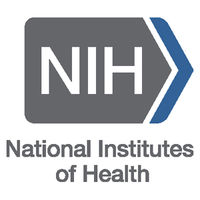Request Demo
Last update 08 May 2025
Leukonychia Totalis
Last update 08 May 2025
Basic Info
Synonyms Hereditary white nails, Leuconychia totalis, Leukonychia totalis + [9] |
Introduction A rare nail anomaly disorder characterised by complete white discolouration of the nails. Patients typically present white, chalky nails as an isolated finding, although other cutaneous or systemic manifestations could also be present. There is evidence the disease can be caused by homozygous or heterozygous mutation in the PLCD1 gene on chromosome 3p22-p21.3. |
Related
1
Drugs associated with Leukonychia TotalisTarget |
Mechanism CaN inhibitors |
Active Org. |
Originator Org. |
Active Indication |
Inactive Indication |
Drug Highest PhaseApproved |
First Approval Ctry. / Loc. United States |
First Approval Date14 Nov 1983 |
6
Clinical Trials associated with Leukonychia TotalisNCT05613660
A Proof of Science Clinical Study With Randomized, Four Arm, Comparative, Single-Blind, Within the Arm - Dose-Response Study to Evaluate the Safety, Efficacy of Different Collagen Peptide Containing Test Treatments in Adult Human Subjects
A proof of science clinical study with randomized, four-arm, comparative, single-blind, within the arm - Dose-Response Study to evaluate the safety and efficacy of different collagen peptide-containing test treatments in adult human subjects.
The dose-response will be evaluated for the effectiveness of each test treatment in three different dosages that is 2.5 g Versus 5 g Versus 10 g.
22 subjects will be enrolled per dose per test treatment to complete 20 subjects per dose per test treatment.
The dose-response will be evaluated for the effectiveness of each test treatment in three different dosages that is 2.5 g Versus 5 g Versus 10 g.
22 subjects will be enrolled per dose per test treatment to complete 20 subjects per dose per test treatment.
Start Date11 Jan 2023 |
Sponsor / Collaborator- |
RBR-739987q
Evaluation of nail physiology in elderly women supplemented with hydrolyzed oral collagen: a randomized, double-blind, placebo-controlled clinical trial
Start Date12 May 2022 |
Sponsor / Collaborator- |
NCT01064830
A Single Center, Investigator-blinded Study of the Efficacy of Topical Cyclosporine 0.05% Ophthalmic Suspension (RESTASIS®) Under Occlusion Versus Vehicle in the Treatment of Brittle Nail Syndrome
Brittle nail syndrome (BNS) refers to nails that exhibit splitting, raggedness (fraying of the distal edge), and peeling (lamellar onychoschizia).(1) This is a common problem, affecting approximately 20% of women, with higher prevalence among the elderly.(2) A number of factors have been proposed as possible causes of nail brittleness, such as anemia, biotin deficiency, or cysteine deficiency. (3,4) However, most authors believe that brittle nails are usually caused by dehydration of the nail plate, either from repetitive cycles of hydration and dehydration related to hand washing or from exposure to dehydrating chemicals, such as those found in nail enamel and cuticle removers. (5,6) Inflammation of the nail as a potential contributing factor has never been studied.
There are currently not consistently effective treatments for this condition. Restasis® is effective in treating keratoconjunctivitis sicca. This condition is characterized by the troublesome condition of dry eyes partially due to decreased tear production exacerbated by inflammation. The BNS manifests itself by nail plate dehydration. The two conditions have in common disruption of water balance which gives rise to problematic clinical disorders. The hypothesis is that a product which benefits tear production would also be effective for brittle nails which contain roughly 15% water.
There are currently not consistently effective treatments for this condition. Restasis® is effective in treating keratoconjunctivitis sicca. This condition is characterized by the troublesome condition of dry eyes partially due to decreased tear production exacerbated by inflammation. The BNS manifests itself by nail plate dehydration. The two conditions have in common disruption of water balance which gives rise to problematic clinical disorders. The hypothesis is that a product which benefits tear production would also be effective for brittle nails which contain roughly 15% water.
Start Date01 Feb 2010 |
Sponsor / Collaborator |
100 Clinical Results associated with Leukonychia Totalis
Login to view more data
100 Translational Medicine associated with Leukonychia Totalis
Login to view more data
0 Patents (Medical) associated with Leukonychia Totalis
Login to view more data
123
Literatures (Medical) associated with Leukonychia Totalis01 Apr 2025·Journal of Drugs in Dermatology
INDIVIDUAL ARTICLE: USCOM V: A Practical Algorithm for the Prevention and Treatment of Cutaneous Side Effects of Hormonal Cancer Therapy
Article
Author: Mitchell, Edith ; Ho, Alice ; Leventhal, Jonathan ; Andriessen, Anneke ; Lacouture, Mario ; McLellan, Beth ; N. Choi, Jennifer
01 Jan 2025·Indian Dermatology Online Journal
Dermatologist Driven Aesthetic Nail Enhancement
Article
Author: Grover, Chander ; Bansal, Shikha ; Nanda, Soni ; Bansal, Sonal
31 Dec 2024·Journal of Dermatological Treatment
Onychopapilloma: a single medical center experience in Southern Taiwan
Article
Author: Chang, Yung-Wei ; Lin, Shang-Hung ; Lai, Po-Ta
Analysis
Perform a panoramic analysis of this field.
login
or

AI Agents Built for Biopharma Breakthroughs
Accelerate discovery. Empower decisions. Transform outcomes.
Get started for free today!
Accelerate Strategic R&D decision making with Synapse, PatSnap’s AI-powered Connected Innovation Intelligence Platform Built for Life Sciences Professionals.
Start your data trial now!
Synapse data is also accessible to external entities via APIs or data packages. Empower better decisions with the latest in pharmaceutical intelligence.
Bio
Bio Sequences Search & Analysis
Sign up for free
Chemical
Chemical Structures Search & Analysis
Sign up for free

